Do you ever find yourself in a situation where you can’t decide whether or not to turn the fan on when the air conditioner is running? It’s a dilemma that many of us face, and it can be tough to know what to do. But don’t worry: this article will help guide you and provide valuable insight into why it’s important to make the right decision.
Contents
- 1 Should Air Conditioning Be On Auto Or Fan?
- 2 Reasons For Using A Fan With An Ac Unit
- 3 Benefits Of Operating Both The Ac And Fan Simultaneously
- 4 Potential Drawbacks Of Doing So
- 5 How To Set Up The Right Temperature Settings?
- 6 Types Of Fans That Work Best With Ac Units
- 7 Maintenance Tips For A Combined System
- 8 Frequently Asked Questions
- 9 Conclusion
We’ll look at some of the advantages and disadvantages of using both together and explain why it’s crucial for your home comfort and energy efficiency. So keep reading to find out if the fan should be on when the AC is on!
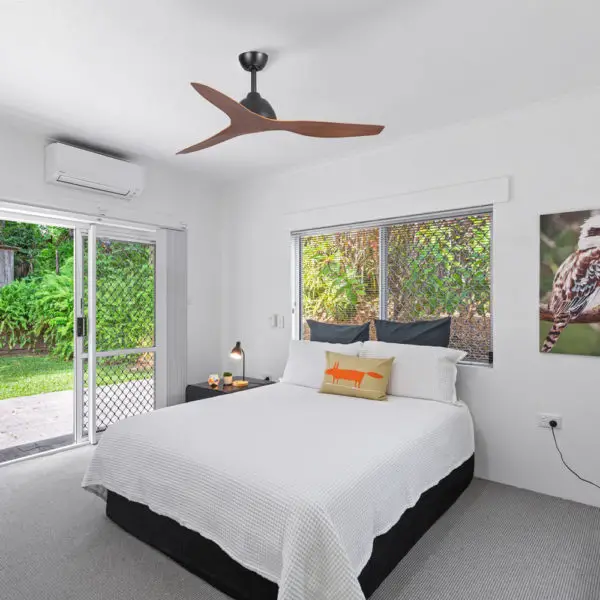
Should Air Conditioning Be On Auto Or Fan?
The debate of whether a fan should be on while the air conditioning is running is a common one. Generally speaking, it’s recommended to leave the fan on when the AC is running. This helps to circulate the air throughout the room and can even help cool it more efficiently than leaving the fan off. It also helps to create an even temperature within your home, as opposed to having colder temperatures in some areas and warmer ones in others.
However, there are some occasions when leaving the fan off might be beneficial. For example, if you’re cooling a single room or area, then turning off the fan can allow for more air circulation in that part of your home, meaning that space will cool down quicker than if you had left it on. In addition, some people believe that leaving your fan on all the time can lead to excess dust being circulated through your home which could cause allergies or other respiratory problems.
In terms of which one to use – auto or manual – it really depends on what works best for you and your lifestyle. If you have pets or small children who need extra airflow throughout their rooms, then auto mode may be a better option since it can adjust itself depending on how much air flow is needed in each area.
On the other hand, if you’re looking for more control over temperature adjustments (e.g., cooling only certain parts of your house), then manual mode would work best as it allows you to set specific temperatures and fan speeds yourself. Ultimately, both options have their advantages and disadvantages so deciding which one works best will depend on your individual needs and preferences.
Reasons For Using A Fan With An Ac Unit
Yes, the fan should be on when the AC is on. A fan helps to evenly distribute cool air throughout the room, making it more comfortable and efficient. It also helps to reduce humidity levels in the space, which can make it feel cooler than if a fan was not used. Additionally, using a fan helps to circulate any residual heat that may still exist in the room after turning on the AC.
Using a fan with an AC unit allows users to enjoy lower energy bills while also creating more comfortable temperatures inside their homes or businesses. Utilizing both allows users to maximize their units’ potential, resulting in better performance while saving money over time by reducing energy costs associated with running an AC system alone.
Benefits Of Operating Both The Ac And Fan Simultaneously
Having a fan running alongside an AC unit has its advantages. Now, let’s look at the benefits of operating both the AC and fan simultaneously.
Finally, using both an AC unit and a fan means better temperature control overall. The combination of these two products can help to maintain optimal temperatures while also improving comfort levels for occupants within a given area.
Potential Drawbacks Of Doing So
Running a fan when the air conditioning is on can have some potential drawbacks.
- The biggest one is that it can increase electricity costs. Fans don’t actually cool the air, they just circulate it. This means that if the fan is running while the air conditioner is on, it’s essentially doubling the amount of energy being used to cool down the room.
- Another drawback of running a fan with an AC unit is that it could cause wear and tear on both systems. Both fans and AC units use motors which work hard to create airflow and cool air respectively. Running them both simultaneously might cause overworking of these motors, leading to premature failure and maintenance costs.
- Finally, running a fan in addition to an AC unit can lead to uncomfortable humidity levels in the home. Air conditioners are designed to take out moisture from the air as well as cooling it down, but fans merely move around already existing air. Too much moisture in the home environment can be uncomfortable for people living there and hard on furniture fabric as well.
How To Set Up The Right Temperature Settings?
When it comes to air conditioning and fan usage, there is no one-size-fits-all answer. The best way to set up the right temperature settings for your home is to make sure that both your AC and fan are running efficiently. Here are five key tips for doing so:
- Check the temperature of each room – Make sure that each room in your home has a consistent, comfortable temperature by using a thermometer. This will help you determine how much cooling or heating power needs to be used in each room.
- Adjust the thermostat – Adjust the thermostat according to the temperature of each room. If some rooms are colder or warmer than others, you may need to adjust the thermostat accordingly.
- Consider insulation – Check to see if any areas of your home are not properly insulated, as this can affect how much cooling or heating power needs to be used in those areas. Making sure all areas of your home are properly insulated can help reduce energy costs and improve overall comfort levels.
- Take advantage of natural ventilation – Opening windows and doors when possible can help keep your home cool in the summer and warm in the winter without having to use too much energy from either the AC or fan.
- Ensure efficiency – Make sure that all ACs and fans are running efficiently by regularly cleaning their filters and replacing them when necessary. Keeping these appliances running smoothly will ensure optimal performance and cost savings over time.
By following these tips, you can make sure that both your AC and fan are running at their most efficient levels, providing you with maximum comfort while keeping energy costs low!
Types Of Fans That Work Best With Ac Units
When the AC is on, it’s important to decide if a fan should be used as well. Depending on the type of fan and AC unit, different fans may work better than others.
The type of fan you choose will depend on your individual preferences and needs, but keep in mind that some are better suited for use with an AC unit than others. Consider what kind of space you have available and how much cooling power you require before selecting a fan for your home or business.
Maintenance Tips For A Combined System
It is important to maintain a combined system of air conditioning and fans properly in order to ensure optimal performance and energy efficiency. The following tips can help you keep your system running smoothly:
Maintenance Tips for a Combined System
| Inspect | Clean | Replace |
|---|---|---|
| Check thermostat settings regularly | Vacuum out dust, dirt, and debris from vents, fan blades, coils, etc. | Change the filters every 1-3 months or as needed |
| Make sure that all electrical connections are secure & free from corrosion | Clean the condensate drain line & drip pan regularly | Replace the fan belt if it is cracked or worn down |
| Test the safety switch on the outside unit monthly & adjust if necessary | Check for any signs of mold or mildew buildup & treat accordingly | Upgrade to an energy efficient/high-efficiency model when replacing existing equipment |
By following these simple maintenance tips, you can help ensure that your combined system runs efficiently and effectively. Regular inspections and cleaning will help keep your system operating at peak performance while reducing future repair costs. Additionally, upgrading to an energy efficient model can save you money in the long run by reducing energy consumption. Taking care of your combined system now will pay off in the future!
Frequently Asked Questions
Following are a few questions asked on keeping on fan in conjunction with an AC:
What Type Of Temperature Should I Set The Ac And Fan To?
When it comes to temperature settings for air conditioning and fans, it’s important to find the balance between comfort and energy efficiency. The ideal temperature setting for both the AC and fan will depend on the climate and season, as well as personal preferences.
Generally speaking, a good starting point is to set the AC at 78 degrees Fahrenheit in summer months, with a fan speed of medium or low. This should provide ample cooling without wasting too much energy. In winter months, you can set the AC lower for additional warmth. For example, you can set it at 70 degrees Fahrenheit with the fan on low or medium speed. This again should provide sufficient warmth while saving on energy costs.
It’s also worth noting that if you are using your fan in tandem with your AC, it may be best to keep the fan at a constant speed regardless of the season. Doing so will ensure that your home remains comfortable while conserving energy costs over time.
How Often Should I Maintain The Combined Ac And Fan System?
Maintaining an air conditioning and fan system is important for keeping cool and comfortable in extreme temperatures. Regular maintenance of the system can help ensure that it works efficiently and effectively. To keep your system running optimally, here are three key steps to follow:
- Check the filter monthly: Clean or replace the filter regularly to prevent dust buildup. This will help improve airflow and reduce energy consumption.
- Inspect all components: Inspect the AC unit, fan blades, motors, and other parts of the system at least twice a year for any signs of wear or damage.
- Call a professional: Have a professional inspect and service your AC unit annually to make sure everything is working properly and efficiently.
These steps will help you maintain your air conditioning and fan system, ensuring optimal performance for years to come. Taking care of your cooling system now can mean fewer unexpected repairs in the future – saving you time, money, and stress!
Conclusion
In conclusion, the decision of whether to run both the AC and fan simultaneously should be based on personal preference. Generally speaking, it isn’t necessary to run them both at the same time in order to achieve optimal temperature levels. However, if you choose to do so, you’ll need to ensure that your AC and fan unit is properly maintained in order to reduce energy consumption.
Additionally, be sure to select a fan that is compatible with your AC system in order to maximize efficiency. Ultimately, it’s up to you if you want the fan on when the AC is running – just be aware of the potential consequences.

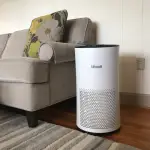
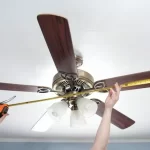
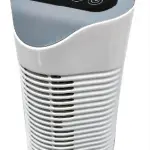



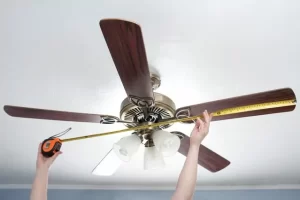
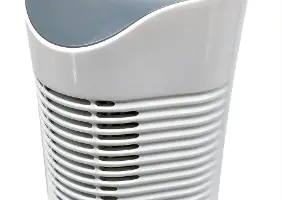
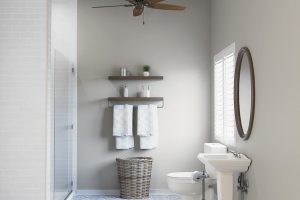
Add Comment